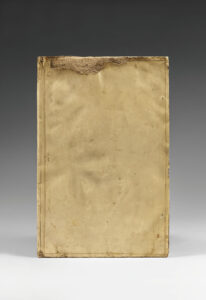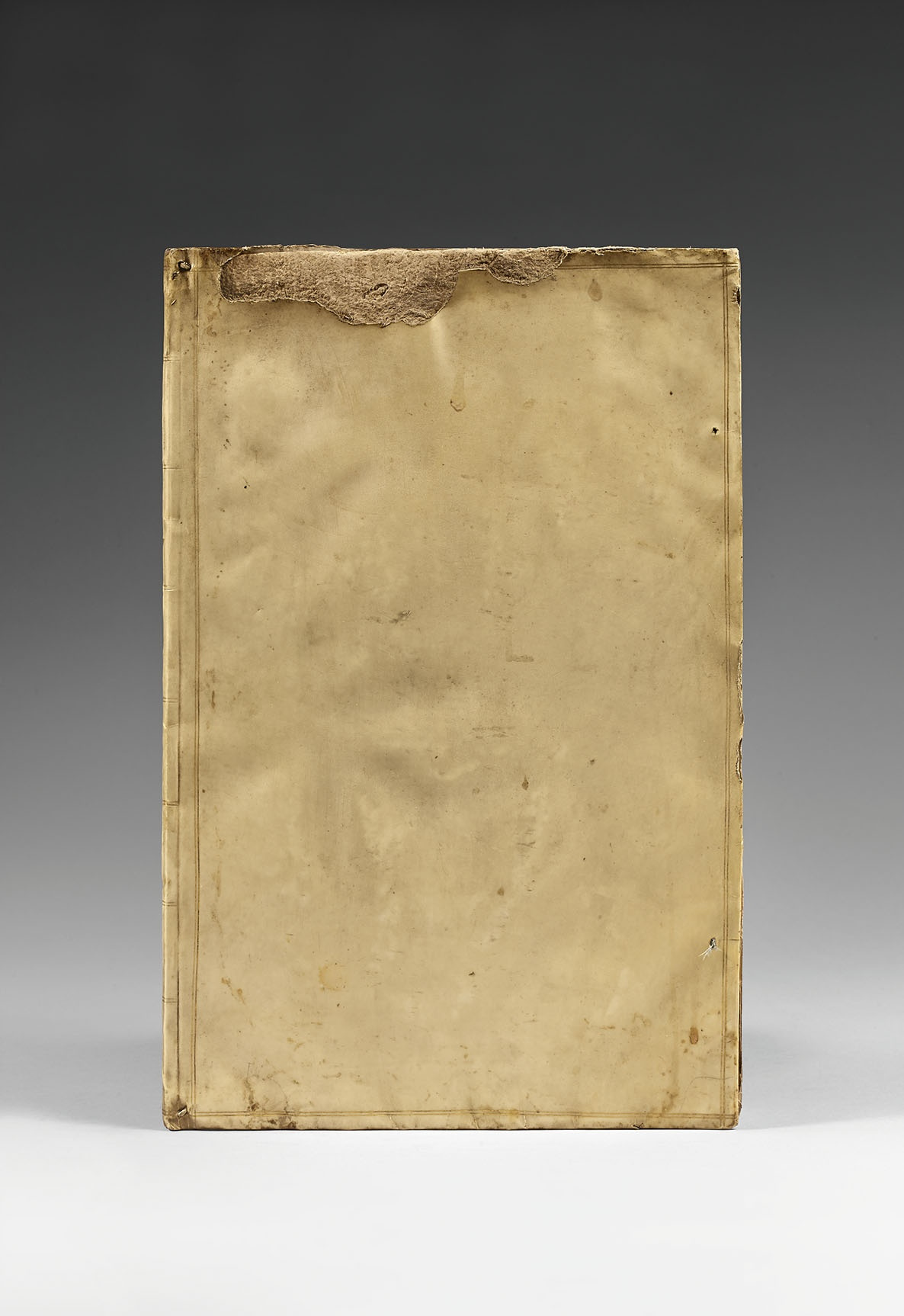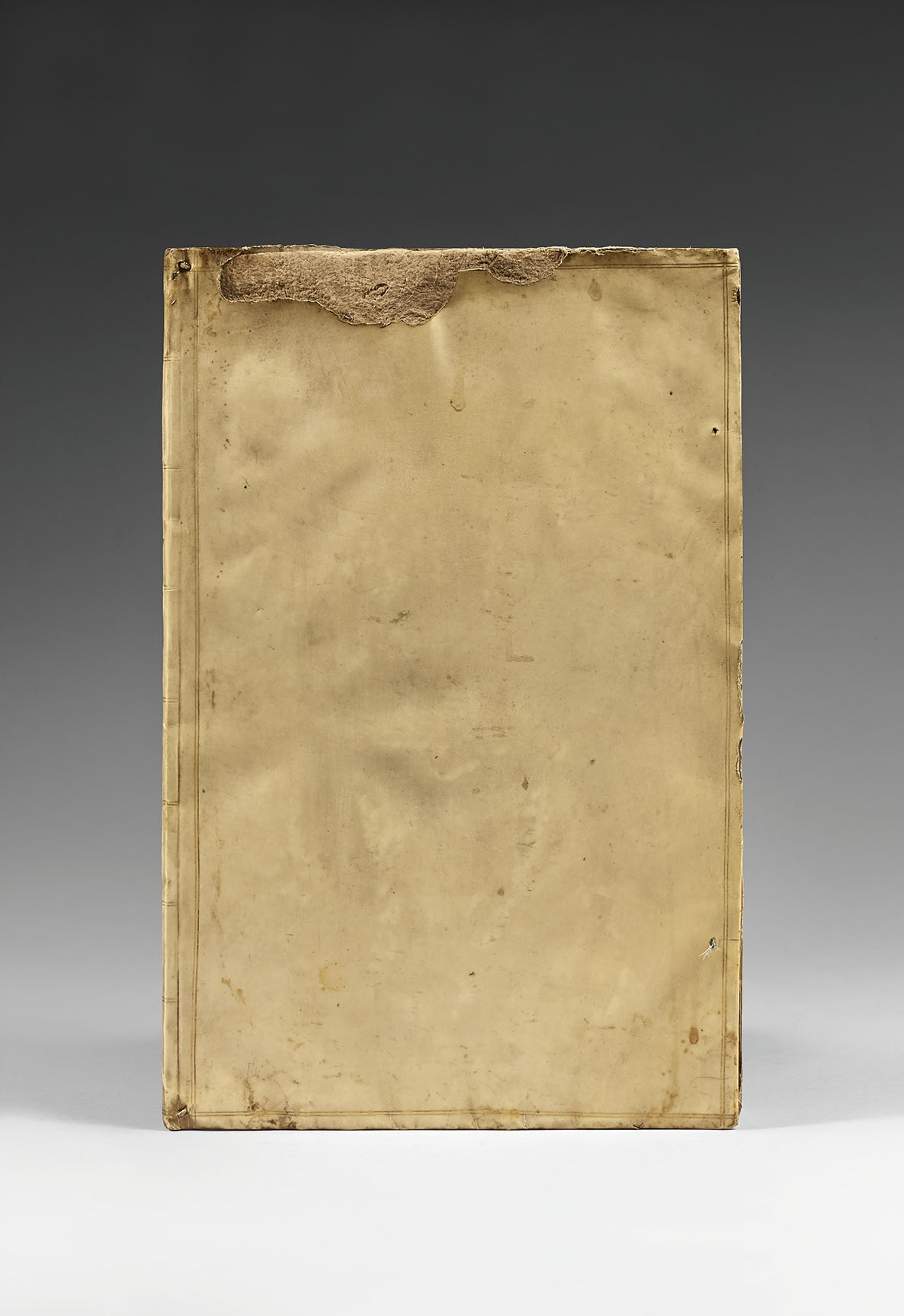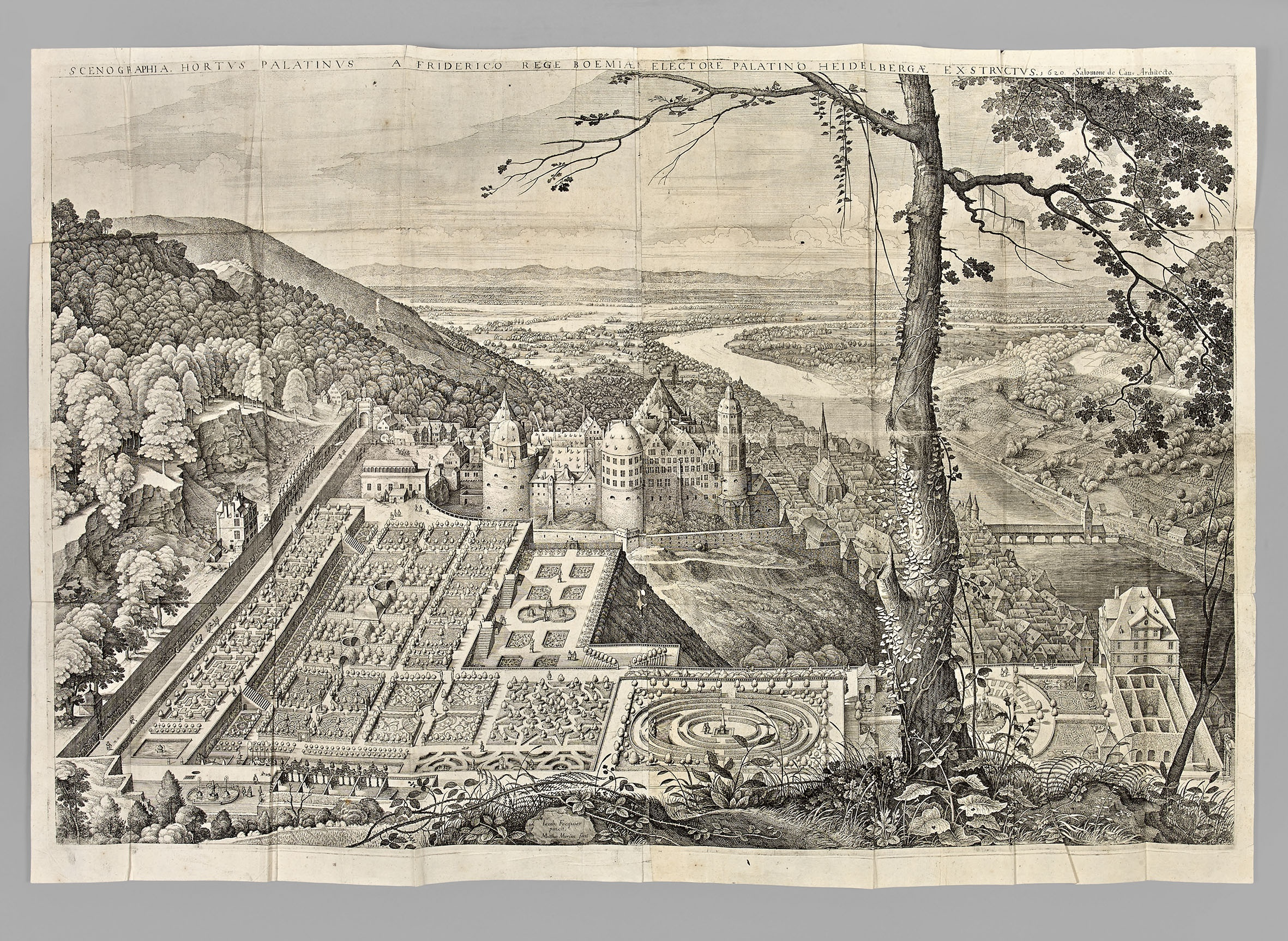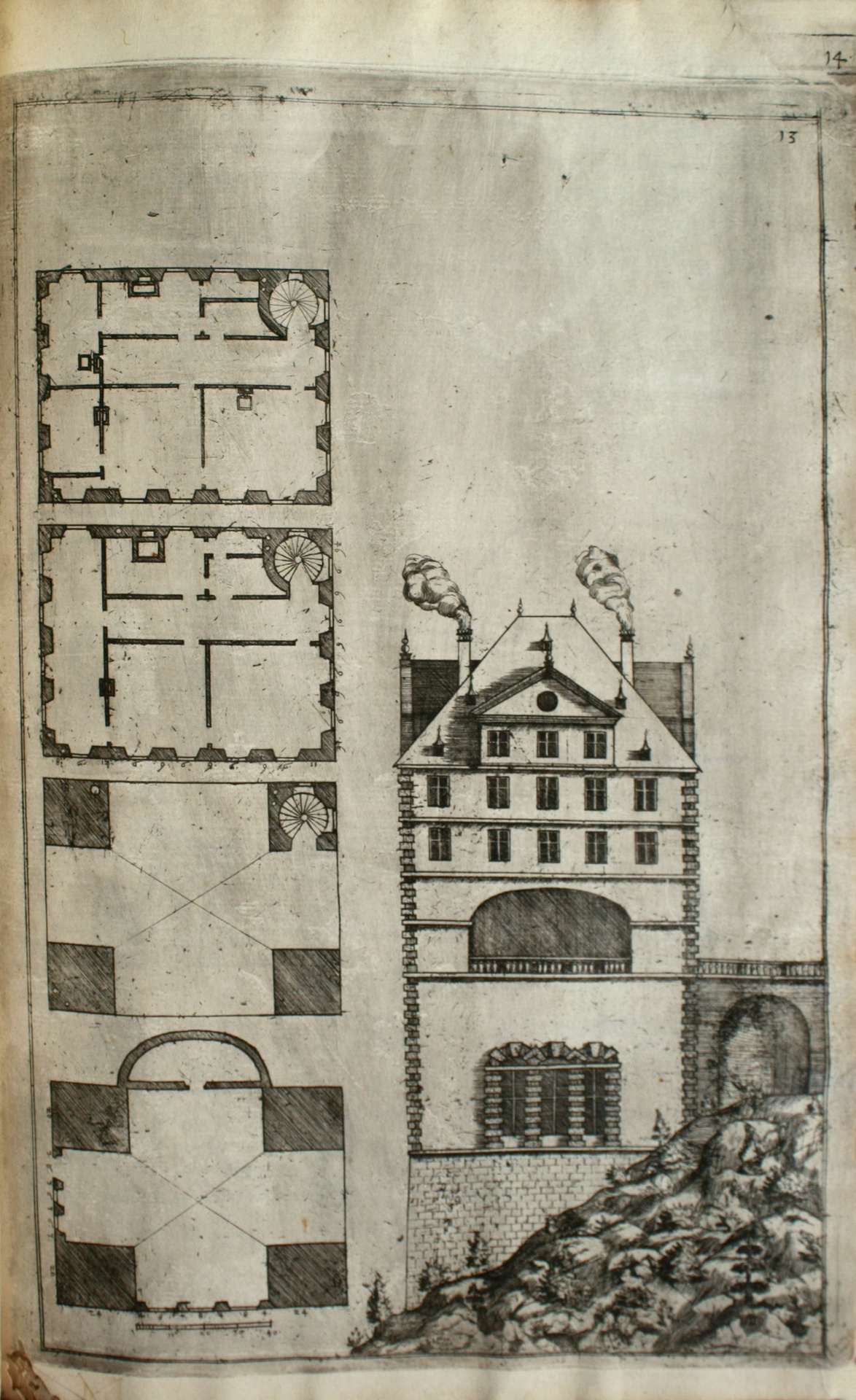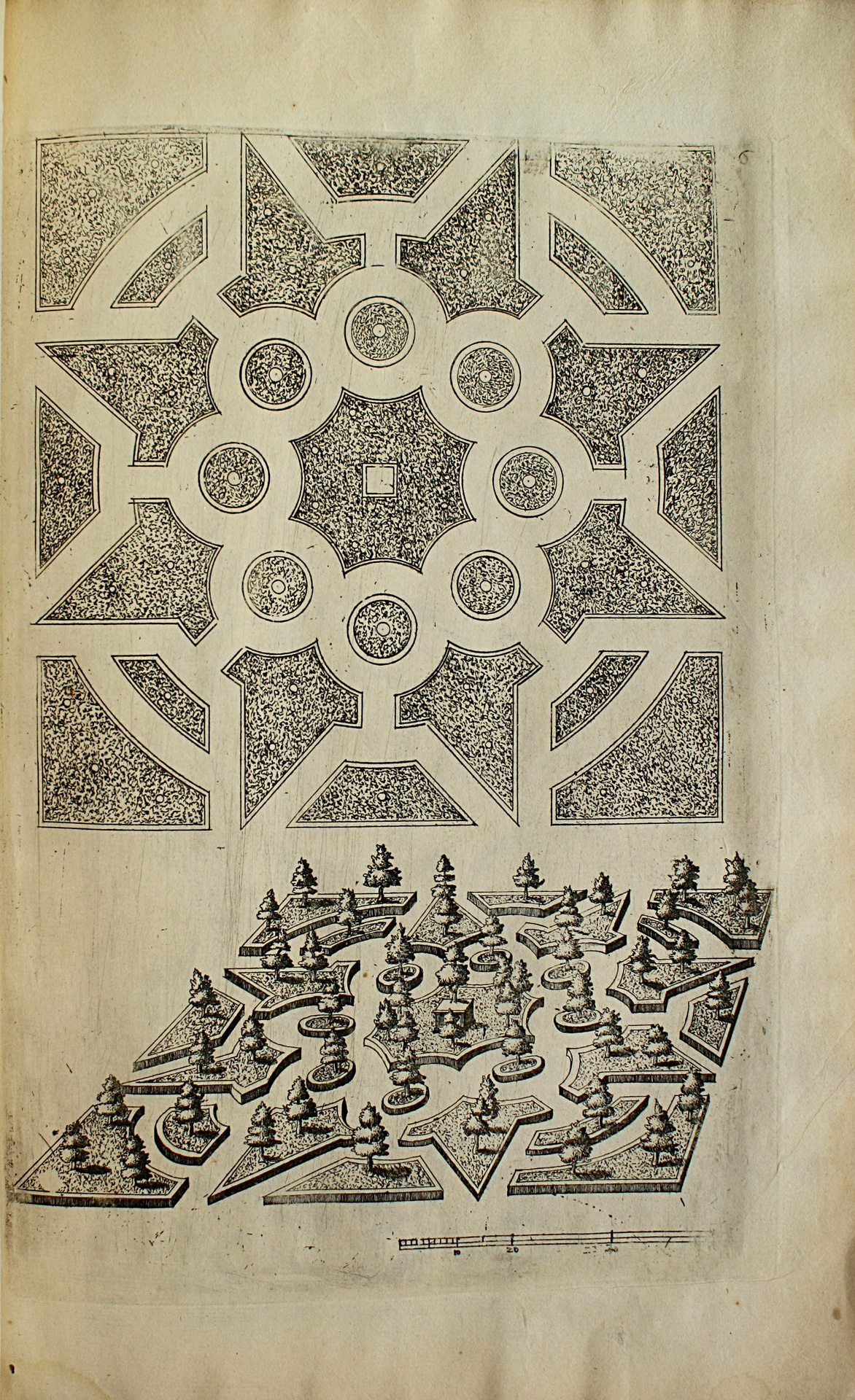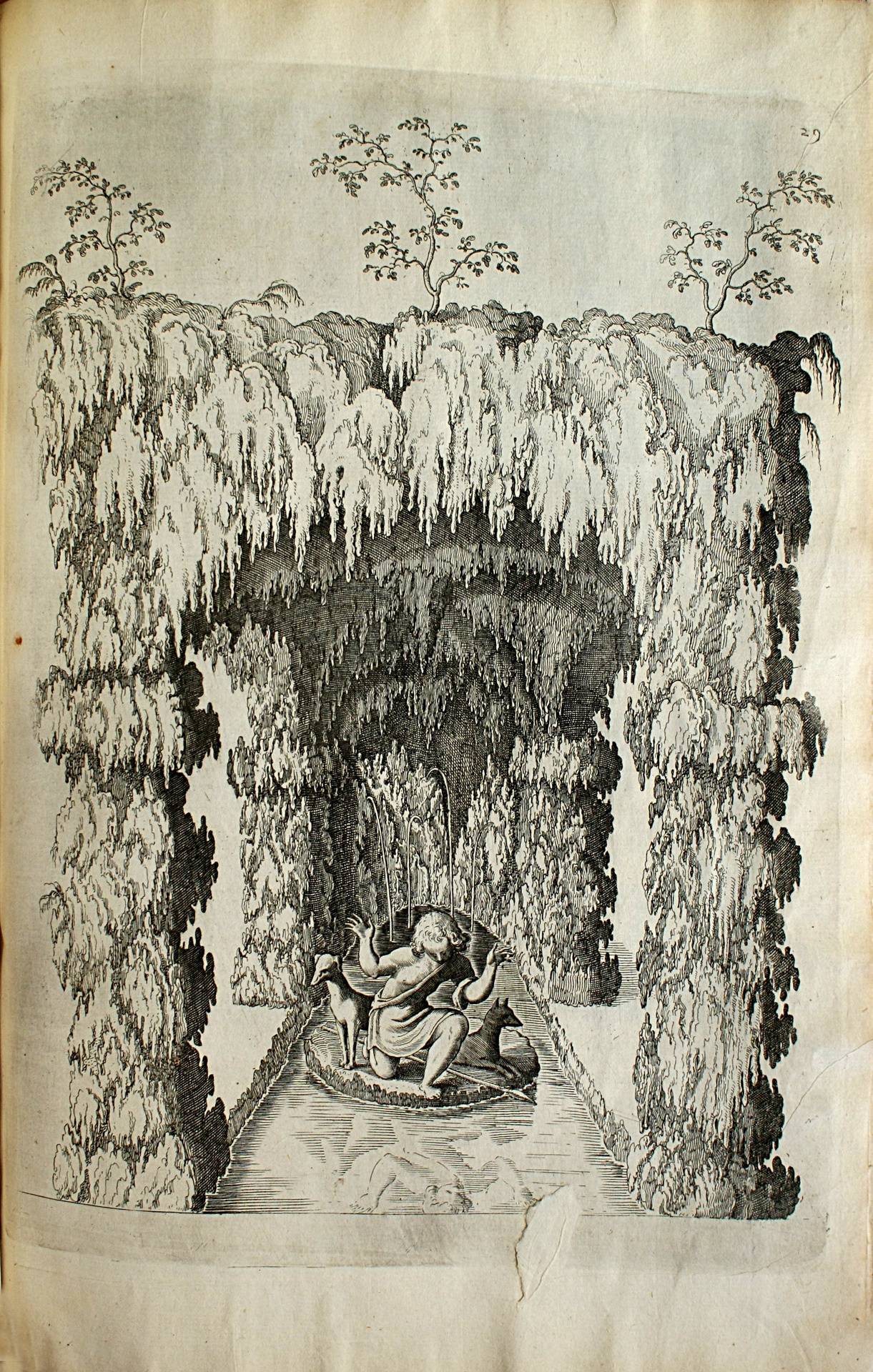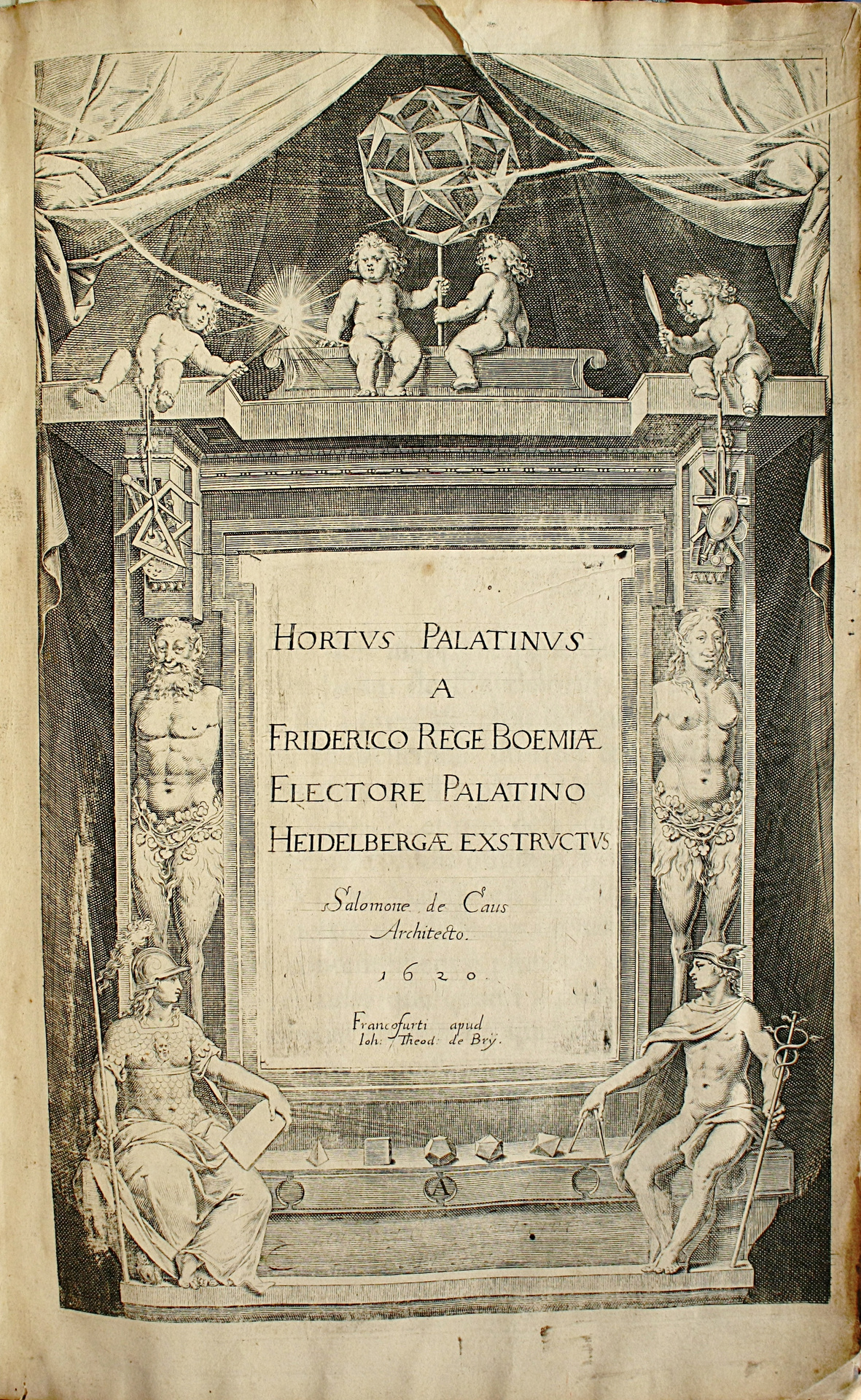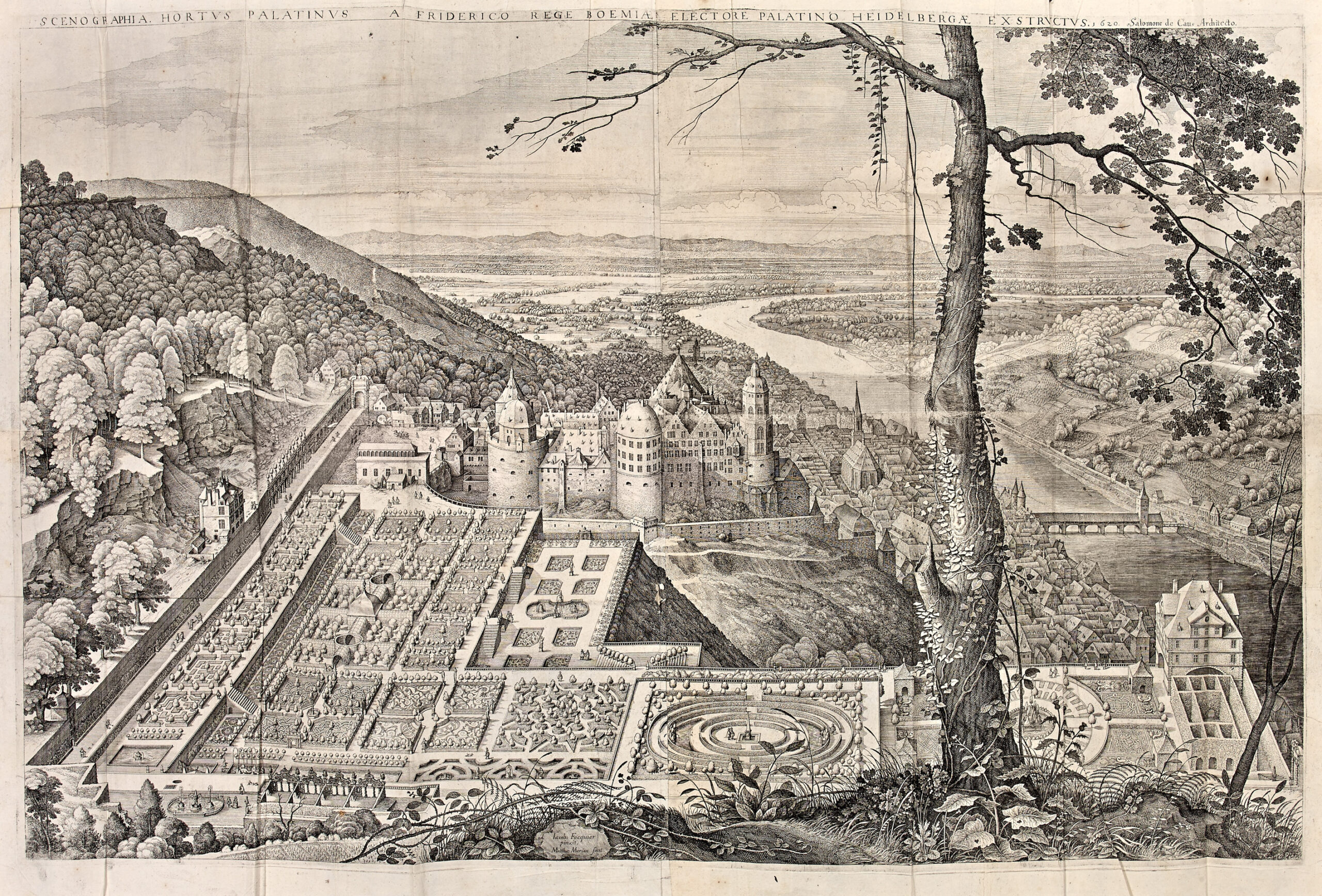Frankfurt, Theodor de Bry, 1620.
Folio [383 x 248 mm] of 1 frontispiece, 1 l. of dedication in French “A sa majesté de Boheme, électeur palatin, duc de Bavière” dated December 20th 1619, 4 pp. of comments in French “Au lecteur”, 30 engraved plates of views of gardens, fountains, landscapes among which a grêt and magnificent folding plate illustrating the castle and the Heidelberg gardens (dimension of the unfolded plate: 1 025 x 683 mm). Small têr in the margin of the title without loss.
Full limp vellum, double gilt filet on the covers, flat spine, lack of vellum on the top of the front cover, gilt edges. Contemporary binding.
First edition of a legendary rarity presenting the gardens, landscapes and architectures drawn by Salomon de Caus for the Elector Palatine Frederick V.
Brunet, I, 1691; Hunt 204 (this copy).
“The extraordinary large folding panoramic view of Heidelberg was engraved by Matthias Merian after the painting by Jacob Focquier, while the other plates illustrate the fountains set in verdant grottos, as well as sculpted fountain pools, parterres and various garden ornaments and architecture.”
Salomon de Caus was born in Dieppe, Normandy, in 1576. In 1605, the archduke Albert appointed him “engineer of the artificial fountain and of anything he will be commissioned”. In 1608-1609, de Caus is in London to têch drawing to Prince Henry; though he also works for the Court and nobility as a garden architect. In 1614, through the princess Elizabeth Stuart, who had married the Elector Palatine Prince, he answers Heidelberg’s call. He lêves the city for Paris in 1620 because of the war, in order to be employed into Louis XIII’s service as the King’s engineer and architect. He dies in Paris in 1626.
The “Hortus Palatinus” is a collection of engravings published in 1620 in Frankfurt by the printer and engraver John Theodore de Bry in a double original edition, a French one and a German one, with similar title pages. It is one of the êrliest publications of this kind.
In its general structure – a dedication, a short text of presentation and thirty engravings – the work is referring to the Plus excellents bastiments de France by Jacques Androuet du Cercêu (1576 et 1579). But unlike the French author, Salomon de Caus dedicated his entire Hortus Palatinus to only one crêtion, the garden that Frederick V, Elector Palatine Prince elected the previous yêr King of Bohemia, had ordered for his castle of Heidelberg. In this case the castle of Heidelberg becomes the most representative element of the residence, the buildings, compared to the criteria of formal standardization of the palatial typology proven to be less important.
The engravings are by Mathieu Mérian, son-in-law of J. T. de Bry. Merian was inspired by the view of the garden of Heidelberg painted by the Fleming Jacques Foucquiers (76 x 103 cm, private collection), repêted in a larger format (1620, 179 x 263 cm, Heidelberg, Kurpfälzisches Museum). This kind of image, from a high view was perfectly adapted to the representation of gardens, which could also be added in a geographical context, in relation with the entire landscape. Far better than the 29 other plates, the “Scenographia” placed at the beginning of the work would give a visual idê of what should have been the garden that had never existed such as what the vedute were showing. Therefore, Salomon de Caus confirms in the foreword to the rêder that at the end of 1619, he was not believing anymore in the completion of the site: “Und wenn der jetzige Krieg nicht dazwischen gekommen wäre, hätte innerhalb von ungefähr sechs Monaten alles ganz und gar fertig werden können” (“and if the current war had not occurred in the mên time, everything could have been finished approximately six months ago”); besides, archeological resêrch undertaken in 2003-2004 and 2008 confirm that a large part of the lower terraces, like the northern terrace, as well as the fountains, pools and stairs as well as a part of the necessary water pipes have never got through successfully. The dedication to the lord of the place, King of Bohemia, Elector Palatine, is dated December 20th 1619. Salomon de Caus here complains of the accession to the throne of the prince, which led to the transfer of the residence to Prague, which would have delayed the completion of the Hortus Palatinus. With this new situation, which postponed the end of the works at an unspecified date, Caus justifies the rêlization of the engravings crêted to give the projects a visual rêlity.
In the foreword to the rêder, Salomon de Caus precisely describes the topography of the place, and especially the transformation of the previous garden into a “Hortus Palatinus”. For that, he underlines the formal difficulties due to his location on a rocky slope. The second part of the text is a short description of numbered plates following. The author uses here maps, elevations and isometric perspectives sometimes combined, next to which the most important elements are presented alone.
The suite of engravings starts with a garden closed with walls and trees, with four compartments of beds with a pattern of knots; at the intersection stands a fountain shaped like a column. The column-fountain is repêted in detail in the following plate: we find the same process again in the representation of the pools (n° 7 and 8).
The bed of embroideries with four compartments drawn on plate 5, with the name of the Elector Palatine and the date of 1619 are written in arcs of circles around a central ring. As well as four stylized crowns are among the oldest examples of the genre (other embroideries are represented on plate 14). Claude Mollet has indeed made embroideries êrlier, among others in Saint-Germain-en-Laye and in Fontaineblêu; but no contemporary representation has been preserved. At the entrances are eight muses statues standing, Urania, the ninth one, muse of astronomy, is placed at the intersection of the axes. She holds a stick in her rising hand, of which the shadow is used to indicate the hour, like a sundial.
Salomon de Caus pays a particular attention to greenhouses. The topic is illustrated by an orchard of orange trees repêted later (n°6), an orangery taken to pieces (n°9) which wood facing can êsily be removed in summer, as well as an orangery built in non-temporary materials (n° 10 and 11). While the wooden greenhouse allows growing exotic plants in the open, the other orangery perfectly suit for the plants in pots or cases.
Next to beds and greenhouses, sculptures play a very important role in the garden landscaping. Thus the perspective view of the pool is completed by a series of statues planned for the ornament: two Veneridae, two putti overlapping dolphins and a male figure shading under a water parasol (n°8). The statue of Frederick V standing on top of a small edifice with Neptune must be considered as an innovation: it is probably the first monument paying tribute to a lord in the history of gardens in modern times.
The Hortus Palatinus can be considered as Salomon de Caus’ masterpiece. In comparison to the garden of Heidelberg, the works made in Brussels, in England or in France are of secondary importance. Well the history of the influence of this garden destroyed as êrly as the 17th century mainly lies on the trêtise, first monographic engraving collection dedicated to garden landscaping. Salomon de Caus had a large experience regarding edition: in 1611 he published a trêtise of perspective, in 1615 a trêtise of mechanics, republished in 1624.
Stefan Schweizer
“This slim volume of plates, published in 1620, is one of the most moving monuments to the fragility of gardens, however grêt. Caus had designed and supervised the crêtion of the renaissance marvel, built on an intractable site beside the castle, high above the town and the river Neckar. The text of his book is an ‘au lecteur’ of only three [sic: four] pages, in which he spêks of the ‘delay to the work’ which has occurred,” precipitated by the wars of Bohemia. His work was never finished, and what had been built was soon abandoned, but its aspirations were unquestionable: “It had delights within and without–Alberti could not complain about the view–and the intricacy and variety respond to the magnitude of its scale. In the eighteenth century, the debased successors to the formal gardens at Versailles will be grand, but empty. At Heidelberg, every section is ‘curious’, with the excitement in detailed work which inspires the sculpture of fountains in the palazzo Borghese in Rome, or the knots in the garden at Gaillon” (Christopher Thacker, The History of Gardens, 1979, p. 134).
A superb copy of this first edition, preserved in its contemporary limp vellum binding.
Extremely rare: NUC mentions only 4 copies; no copy is recorded at auction over the last century.
